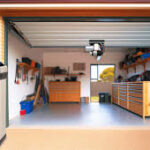A refrigerator is one of the most essential appliances in any household, working day and night to keep food fresh and safe. When cooling issues arise, they can cause inconvenience, food spoilage, and unexpected costs. Because refrigerators contain several complex components that work in harmony, identifying the cause of temperature issues requires a careful, methodical approach. A repair clinic plays a vital role in diagnosing these problems by combining technical knowledge with structured testing to identify the source of the malfunction. By examining airflow, electrical systems, sensors, and mechanical parts, repair technicians ensure that the correct repairs are made the first time. Understanding how these clinics operate gives homeowners confidence in the repair process and helps them appreciate the value of proper diagnosis.
Initial Assessment and Temperature Verification
The first step in diagnosing a cooling problem begins with confirming the customer’s observations. Repair clinics start by checking the refrigerator and freezer temperature settings to ensure they have not been accidentally changed. Technicians then use thermometers or digital sensors to measure actual internal temperatures, as built-in displays may not always be accurate. If temperatures are too high, they assess whether the cooling issue affects the refrigerator, the freezer, or both compartments. This difference helps determine whether the problem involves airflow restrictions, compressor performance, or a malfunctioning evaporator coil. The technician will also listen for unusual noises, such as clicking or humming, and look for signs of frost buildup, water leaks, or warm air entering the system. By gathering this initial data, clinics narrow down potential causes without immediately disassembling components. Understanding how the refrigerator is behaving in its current state provides technicians with a roadmap for deeper diagnostic steps and ensures time is used efficiently during repair.
Checking Airflow and Ventilation Issues
One of the most common causes of poor cooling is restricted airflow inside the unit. A repair clinic examines the vents between the freezer and refrigerator to ensure cold air can circulate freely. Blocked vents, often caused by overloading shelves or ice buildup, can lead to uneven cooling and warmer temperatures in some areas. Repair technicians also inspect the evaporator fan inside the freezer, as it is responsible for circulating cold air throughout the appliance. If the fan is noisy, stuck, or not running, airflow is compromised. Another key step is checking the condenser coils at the back or bottom of the refrigerator. Dirty coils, covered in dust or pet hair, can’t transfer heat efficiently, forcing the system to work harder and leading to poor cooling. Cleaning the coils can often restore proper performance. If parts need replacement, homeowners may choose to get your refrigerator parts at Repair Clinic, as accessing the correct components ensures compatibility and reliability. Addressing airflow issues early prevents more serious mechanical failures and improves overall energy efficiency.
Evaluating Electrical Components and Control Systems
Once airflow is confirmed to be normal, a repair clinic proceeds to the electrical and control systems that regulate cooling. Modern refrigerators rely on sensors, control boards, and temperature probes to function correctly. If any of these components malfunction, the fridge may continue running but fail to reach the set temperature. Technicians use diagnostic tools to test thermistors and thermostats, checking for inaccurate readings or failure to signal the compressor. The control board is also examined for visible damage, such as burnt circuitry or loose connections. If the compressor does not turn on when needed, the clinic tests relays and start capacitors to determine whether the problem is electrical rather than mechanical. These tests are crucial because replacing the wrong part can be costly and ineffective. By carefully evaluating each electrical pathway, technicians determine whether the problem lies in communication between components or in power delivery. This stage helps ensure that the cooling cycle is being adequately managed and that each system component is functioning in sync.
Inspecting the Mechanical Cooling System
When electrical and airflow checks are complete, attention turns to the mechanical cooling system. The compressor is the heart of the refrigerator, responsible for circulating refrigerant through the coils. If the compressor is overheating, making loud noises, or failing to maintain pressure, cooling performance suffers. Technicians use gauges to measure system pressure and determine whether refrigerant levels are correct. Low refrigerant can indicate a leak in the sealed system, which may require advanced tools to detect. The evaporator coil is inspected for frost patterns—excessive ice buildup suggests a defrost system failure, while an uneven frost pattern can signal refrigerant issues. Clinics also test the defrost heater, defrost thermostat, and the timer or control board that regulates frost melting. A failure in this system can cause airflow blockage and a temperature rise. The condenser fan is another critical part; if it stops running, heat cannot be expelled, which can cause the compressor to overheat. Each mechanical component is evaluated to ensure it supports the cooling cycle effectively.
Testing the Defrost System and Drainage
A faulty defrost system is one of the most common reasons refrigerators stop cooling properly. Ice buildup on the evaporator coil prevents cold air from moving into the refrigerator, causing temperature fluctuations. Repair clinics carefully test the defrost heater to determine whether it activates during the defrost cycle. If the heater is working, attention turns to the defrost thermostat or timer, which signals when the system should activate. If either is defective, the coil may freeze over time. Technicians also examine the defrost drain to ensure it is not clogged with debris or ice. A blocked drain can cause water to back up and freeze, leading to further obstructions. If needed, the clinic will melt ice and clean the drain to restore proper water flow. Ensuring the defrost system works correctly not only maintains cooling performance but also prevents leaks, foul odors, and internal damage. By addressing both defrost and drainage, repair clinics improve long-term reliability and prevent recurring cooling issues.
Final Performance Test and Customer Guidance
After repairs or adjustments are made, the clinic conducts a full performance test to confirm that the refrigerator returns to normal operating temperatures. Technicians run the unit through multiple cooling cycles, observe compressor function, and measure temperature stability in both compartments. Only after the system maintains the proper temperature range will they consider the repair successful. Before leaving, the clinic provides the homeowner with guidance on appropriate use and maintenance, such as avoiding overloading shelves, keeping vents clear, and cleaning condenser coils regularly. Customers may also receive tips on identifying early signs of cooling issues, allowing them to take action before major problems occur. This final step ensures long-term performance and keeps the refrigerator functioning reliably. A thorough diagnostic process, combined with clear communication, gives homeowners confidence in their appliance’s performance and helps prevent future breakdowns.
Read More: https://acubi.us/how-to-choose-the-right-replacement-parts-for-your-garage-door/
Precision Diagnosis Leads to Long-Lasting Repairs
Cooling problems in a refrigerator can stem from a variety of causes, and correctly diagnosing them requires a structured, step-by-step approach. A repair clinic examines settings, airflow, electrical components, mechanical systems, and defrost cycles to pinpoint the trustworthy source of the issue. This methodical process ensures that repairs are accurate, efficient, and effective. By identifying problems early and replacing only necessary parts, clinics help homeowners avoid unnecessary expenses and extend the life of their appliances. With the right tools, knowledge, and attention to detail, refrigerator repair clinics restore reliable cooling and deliver lasting peace of mind.



